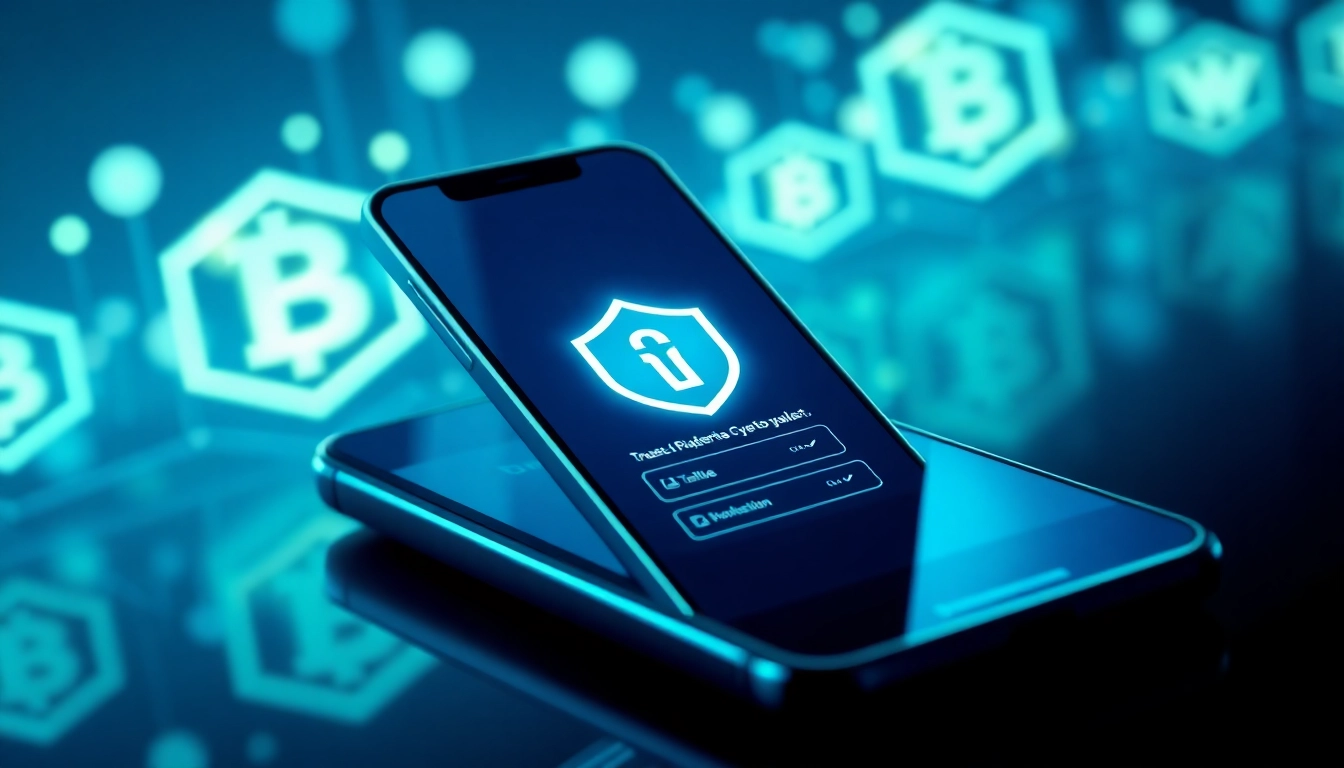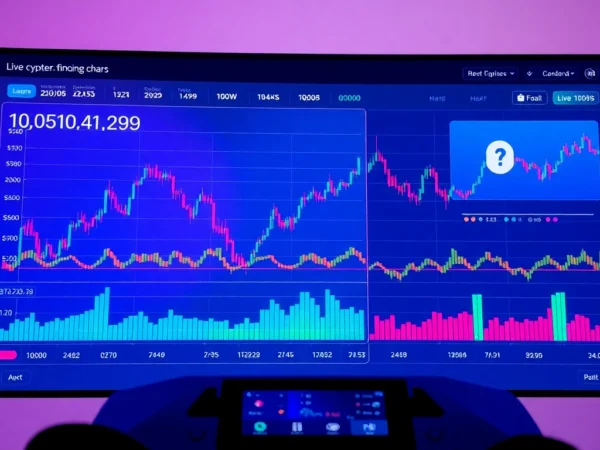How to Choose the Right Crypto Wallet for Secure Digital Asset Management
Understanding the Importance of Crypto Wallets in Contemporary Digital Finance
As the cryptocurrency landscape continues to expand exponentially, securing digital assets has become a paramount concern for investors, traders, and blockchain enthusiasts alike. Central to this security paradigm is the crypto wallet, the essential tool that enables users to store, send, and receive digital currencies efficiently while maintaining control over private keys. With an increasing number of wallet types and security features, making an informed choice is crucial for safeguarding assets and optimizing the crypto experience.
Understanding Crypto Wallets: Types and Key Features
Hardware vs Software Wallets: Pros and Cons
Crypto wallets are broadly categorized into hardware and software solutions, each offering distinct advantages and limitations.
Hardware Wallets
Hardware wallets are physical devices that store private keys offline, making them immune to online hacking attempts. Brands like Ledger and Trezor exemplify this category, providing high security for long-term holding of large crypto portfolios. Their main advantage lies in resistance to malware and phishing attacks, as private keys never leave the device. However, they come with higher upfront costs and less convenience for frequent transactions.
Software Wallets
Software wallets include desktop, mobile, and web-based options. Examples like MetaMask and Trust Wallet are highly accessible, allowing quick transactions and integration with decentralized applications (dApps). The trade-off is increased exposure to online threats, requiring robust security measures such as strong passwords and 2FA. They are ideal for daily trading and smaller holdings but less suited for safeguarding large sums long-term.
Security Features to Look for in a Crypto Wallet
Security is the backbone of any crypto wallet. Essential features include multi-factor authentication (MFA), biometric verification, encryption protocols, and the ability to set transaction limits. Multi-signature (multi-sig) capabilities add an extra layer by requiring multiple approvals before executing transactions, mitigating the risk of unauthorized access. Regular firmware updates and open-source code reviews also contribute to enhanced security resilience.
Compatibility with Different Blockchains and Assets
In today’s multi-chain ecosystem, compatibility is critical. Leading wallets support numerous blockchains—Ethereum, Binance Smart Chain, Solana, and more—allowing users to manage diverse assets seamlessly. Multi-asset support reduces the need to switch between different wallets, streamlining asset management and increasing operational efficiency. When choosing a wallet, ensure it interoperates with your preferred assets and dApp ecosystems.
Setting Up Your Crypto Wallet: Step-by-Step Guide
Creating a New Wallet Securely
Today’s wallets typically involve straightforward setup procedures. Download the official app or buy a hardware device from reputable sources. During setup, generate a strong recovery phrase—usually a 12-24 word seed—keeping this offline and secure. Never share your seed phrase; it grants complete access to your wallet. Enable security features such as biometric verification where available.
Backing Up Private Keys and Recovery Phrases
Backup is your safety net against device loss or failure. Write down your recovery phrase on paper in a secure, fireproof location. Avoid digital copies to prevent hacking. Some wallets offer encrypted backups stored in cloud services, but these should be used cautiously, with encryption and multi-factor authentication in place. Regularly verify backups to ensure they remain accessible and uncorrupted.
Connecting Your Wallet to Exchanges and DApps
Integrate your wallet with exchanges like Binance or Coinbase for seamless trading, or connect to decentralized platforms via Web3 browsers like MetaMask. Always verify URLs and use official platforms to prevent phishing. When connecting, authorize only trusted sources, and disconnect when not actively trading to minimize exposure.
Best Practices for Safe Crypto Wallet Usage
Keeping Private Keys Safe and Private
The private key or seed phrase is the master key to your assets. Store it offline, secure, and never share it. Use hardware wallets for large holdings to isolate private keys from online threats. Avoid storing private keys on connected devices vulnerable to malware or in-share digital notes.
Using Cold Storage for Long-Term Holding
For assets intended for long-term storage, cold wallets—hardware devices or air-gapped computers—offer optimal security. Transfer assets from hot wallets to cold storage periodically, especially if you’re not actively trading. Cold storage mitigates risks posed by online vulnerabilities, phishing, and hacking.
Monitoring Wallet Activity and Detecting Threats
Regularly review transaction histories for unauthorized activity. Enable alerts for large transactions where available. Utilize security tools such as blockchain explorers to verify outgoing transactions and watch for signs of compromise. Consider setting up multi-sig requirements for significant transfers to add an extra layer of protection.
Top Crypto Wallets in 2025: Comparative Insights
Features and User Experience of Leading Wallets
In 2025, wallets like MetaMask, Exodus, Trust Wallet, and Ledger dominate the market due to their usability and security features. MetaMask offers extensive Web3 integration, suitable for DeFi activities. Exodus provides a user-friendly interface with multi-asset support, ideal for beginners. Trust Wallet excels with multi-chain compatibility and direct dApp access. Ledger hardware wallets provide unmatched security for substantial holdings.
Security Advantages of Popular Wallets
Hardware wallets like Ledger and Trezor offer offline private key storage, immune to online threats. Software wallets such as MetaMask employ encryption and optional biometric protection. Trust Wallet’s multi-chain support and open-source coding enable independent security audits. Combining hardware and software solutions can provide multi-layered security, essential for safeguarding growing portfolios.
Choosing a Wallet for Beginners vs Advanced Users
Beginners should prioritize intuitive interfaces, comprehensive support, and high security, making wallets like Exodus and Trust Wallet suitable choices. Advanced users handling substantial assets benefit from hardware wallets and multi-signature capabilities, which provide more control and protection. Assess your needs, trading activity, and security preferences to choose thoughtfully.
Future Trends in Crypto Wallet Technology
Decentralized Wallet Innovations
Decentralized or non-custodial wallets are evolving with features like social recovery, threshold signatures, and decentralized identity solutions, enhancing user sovereignty. Projects like Argent and Safe have pioneered social recovery mechanisms that mitigate the risk of seed phrase loss through trusted contacts or threshold cryptography.
Integration with NFTs and DeFi Platforms
Wallets are increasingly integrated with NFT marketplaces and DeFi protocols for seamless asset management. In 2025, multi-purpose wallets enable users to hold, display, and transact NFTs directly within their interface, making digital collectibles more accessible. DeFi integrations allow for staking, liquidity provision, and yield farming, all within a unified platform.
Enhanced Security with Multi-Signature and Biometrics
Security is augmented through multi-signature setups requiring multiple approvals for transactions, often combined with biometric authentication such as fingerprint or facial recognition. These advances make wallets resilient against hacking and unauthorized access, especially vital for corporate or high-net-worth individuals.










